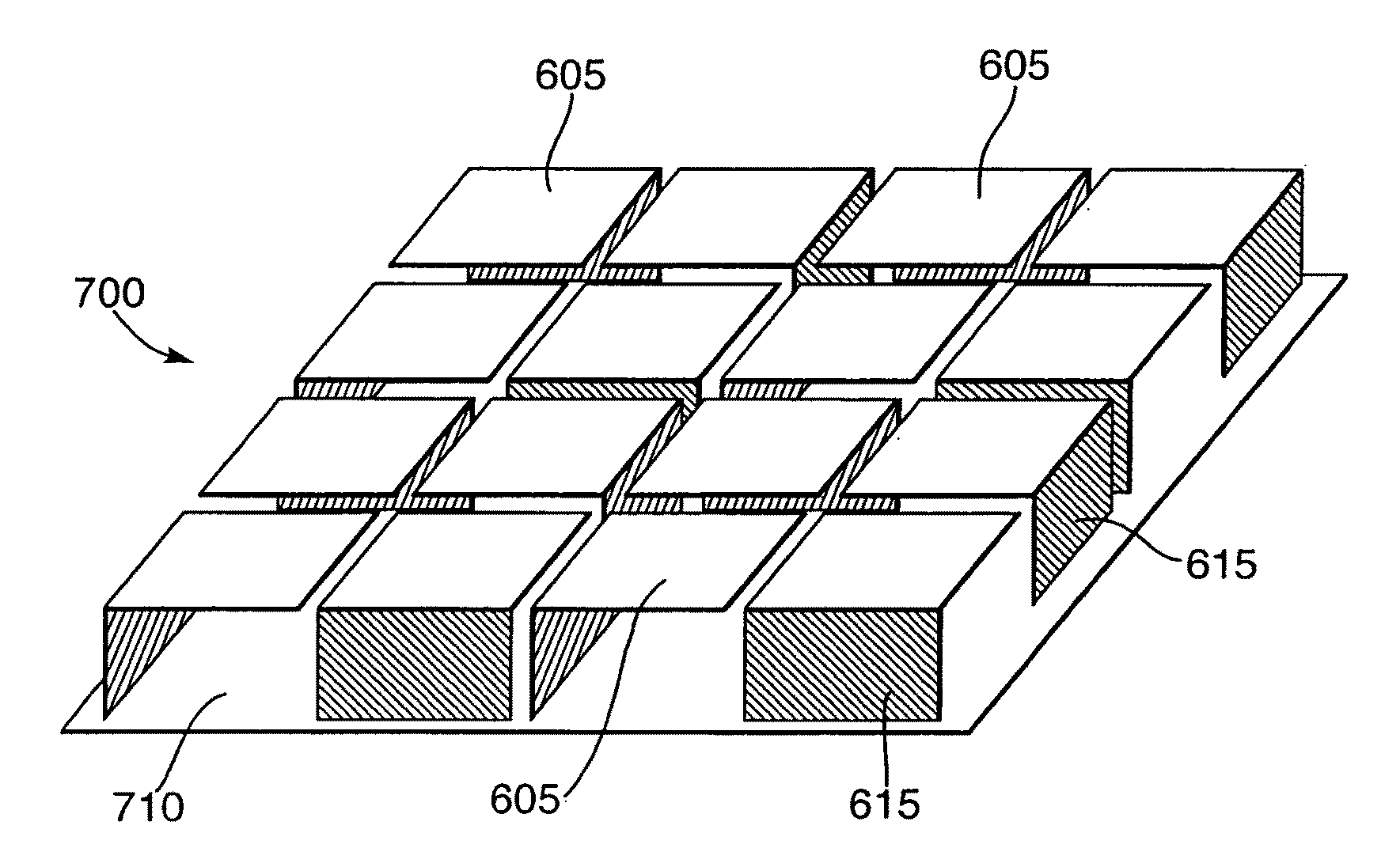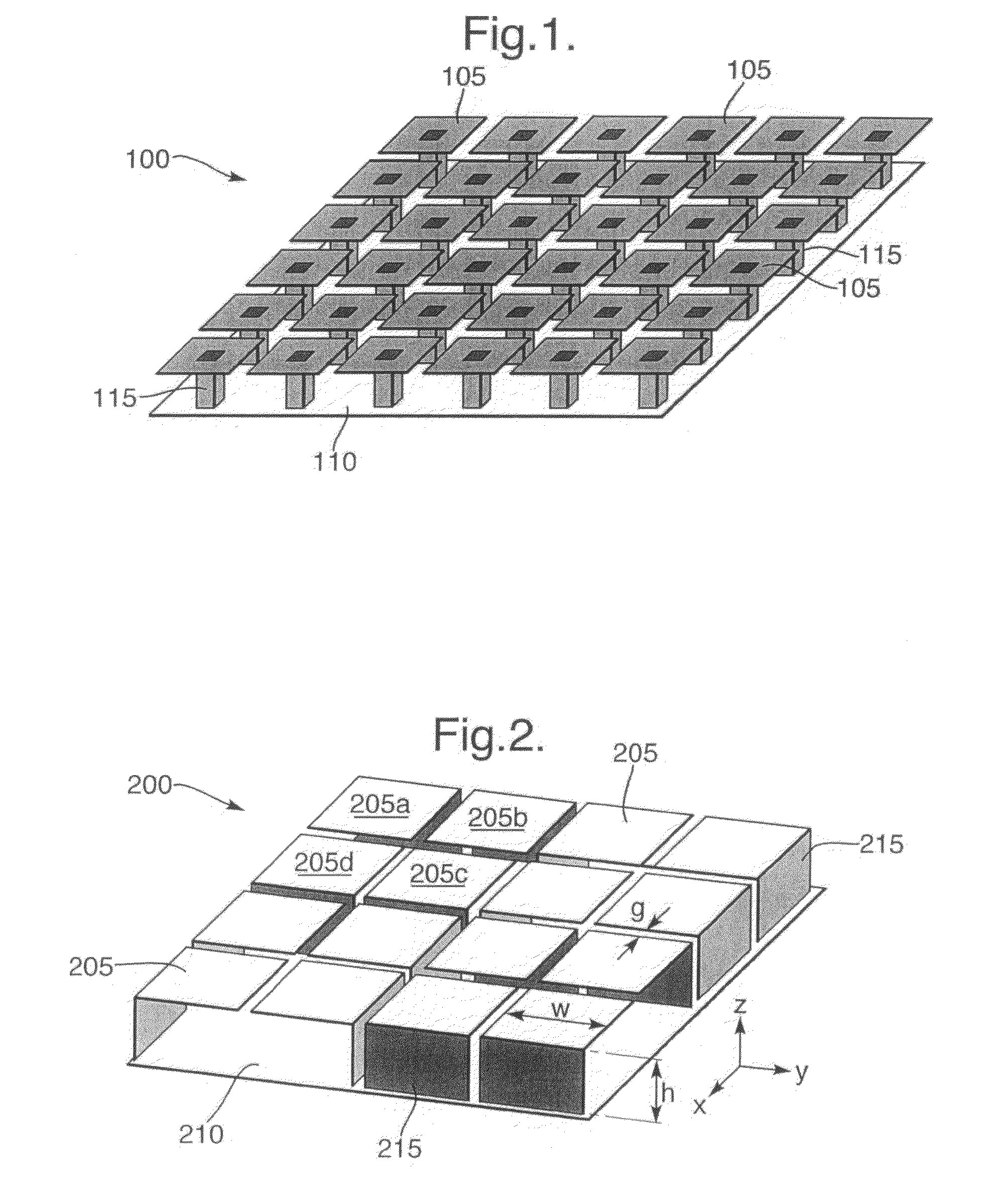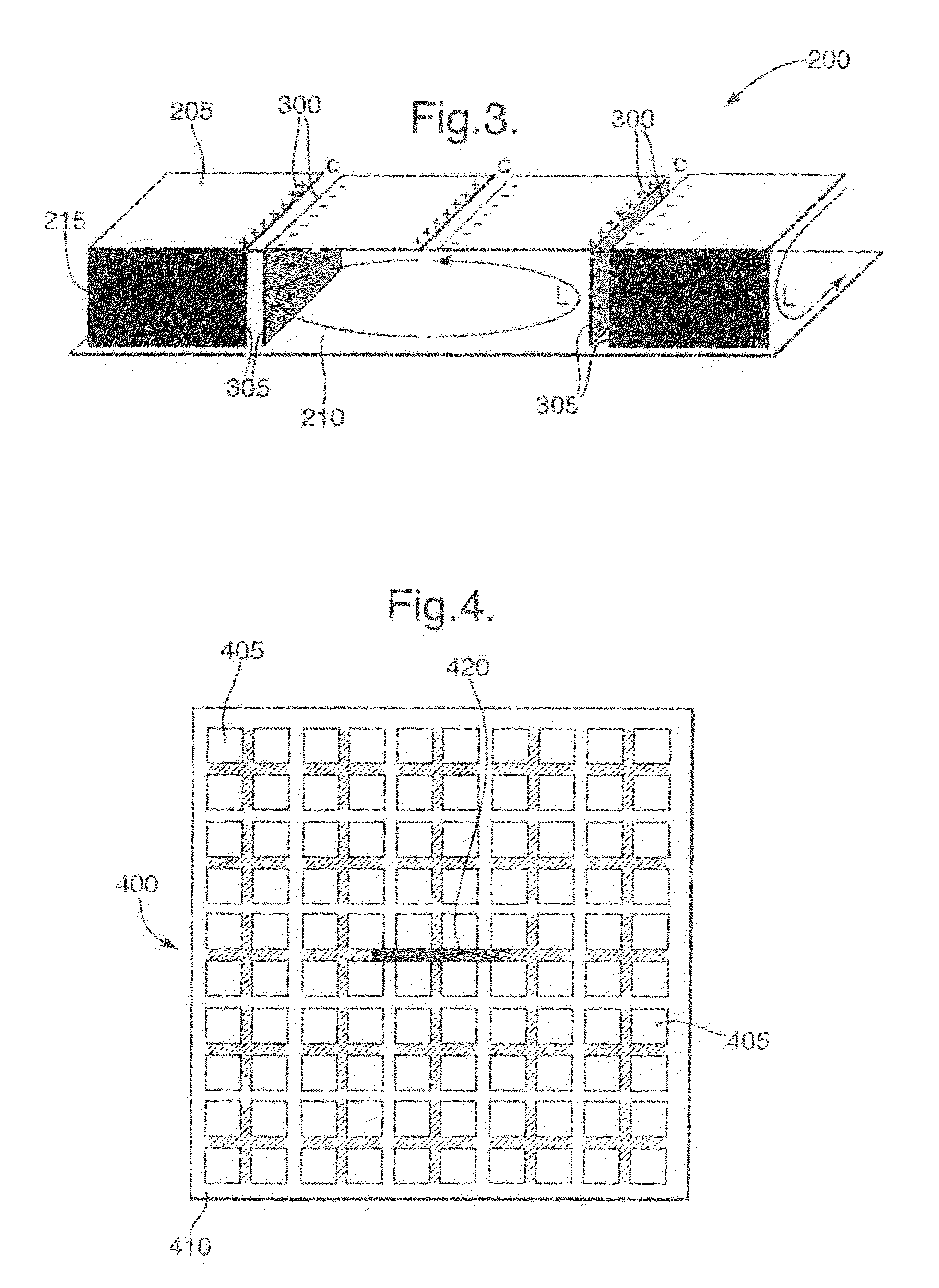Electromagnetic band-gap structure
a technology of electromagnetic band and structure, applied in the direction of structural forms of radiation elements, electrical equipment, simultaneous aerial operations, etc., can solve the problems of heavy structure and bulky structure, and achieve the effect of uniform structure and simplified manufactur
- Summary
- Abstract
- Description
- Claims
- Application Information
AI Technical Summary
Benefits of technology
Problems solved by technology
Method used
Image
Examples
Embodiment Construction
[0029]Exemplary embodiments of the present invention will now be described in more detail, by way of example only, with reference to the accompanying drawings.
[0030]Electromagnetic band-gap (EBG) structures according to exemplary embodiments of the present invention have been designed to provide a high-impedance surface to electromagnetic radiation at selected frequencies in the range 100 MHz to 1 GHz in particular. These EBG structures are particularly suited for application to low-profile antennae in which they are used to provide a ground plane. At frequencies in the range 100 MHz to 1 GHz, known high-impedance surfaces require large and heavy structures. However, exemplary embodiments of the present invention aim to provide a light-weight structure and one that is simple and inexpensive to make.
[0031]An EBG structure according to an exemplary embodiment of the present invention will now be described with reference to FIG. 2.
[0032]Referring to FIG. 2, a perspective view of a port...
PUM
 Login to View More
Login to View More Abstract
Description
Claims
Application Information
 Login to View More
Login to View More - R&D
- Intellectual Property
- Life Sciences
- Materials
- Tech Scout
- Unparalleled Data Quality
- Higher Quality Content
- 60% Fewer Hallucinations
Browse by: Latest US Patents, China's latest patents, Technical Efficacy Thesaurus, Application Domain, Technology Topic, Popular Technical Reports.
© 2025 PatSnap. All rights reserved.Legal|Privacy policy|Modern Slavery Act Transparency Statement|Sitemap|About US| Contact US: help@patsnap.com



